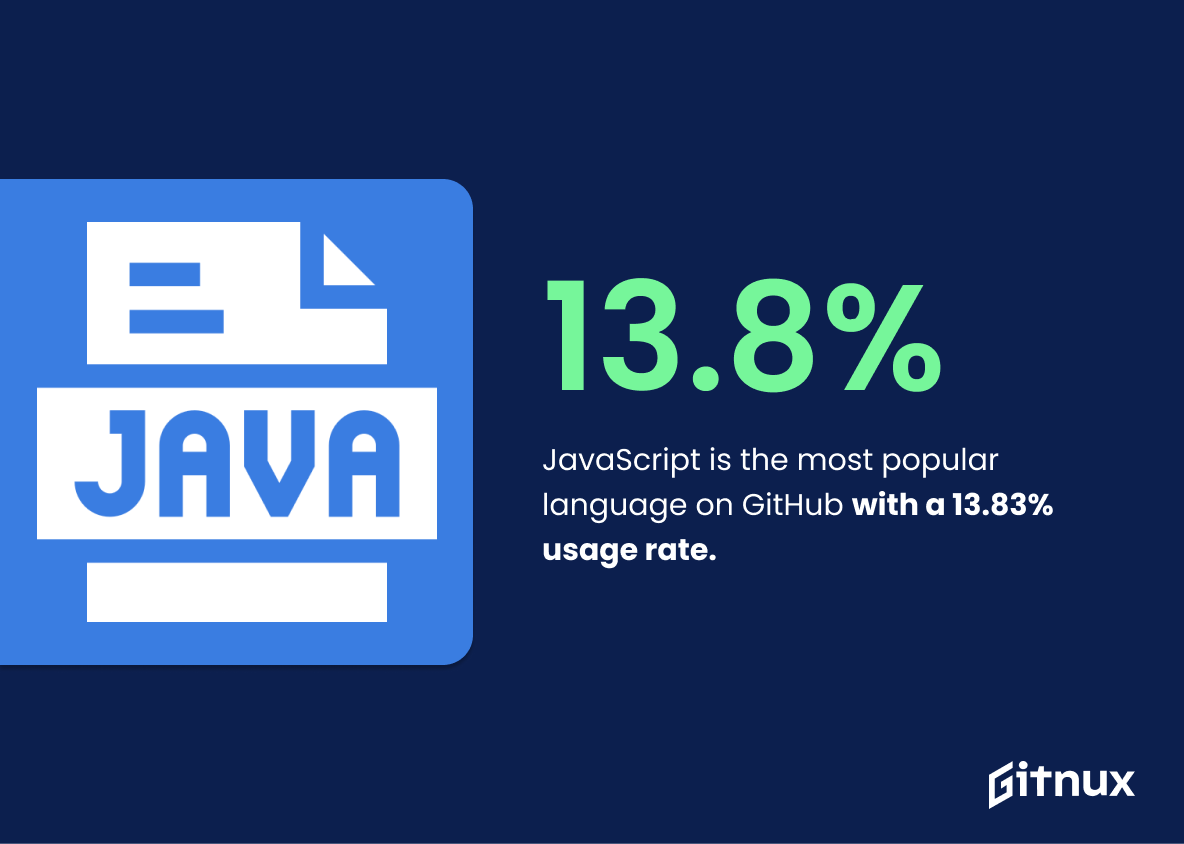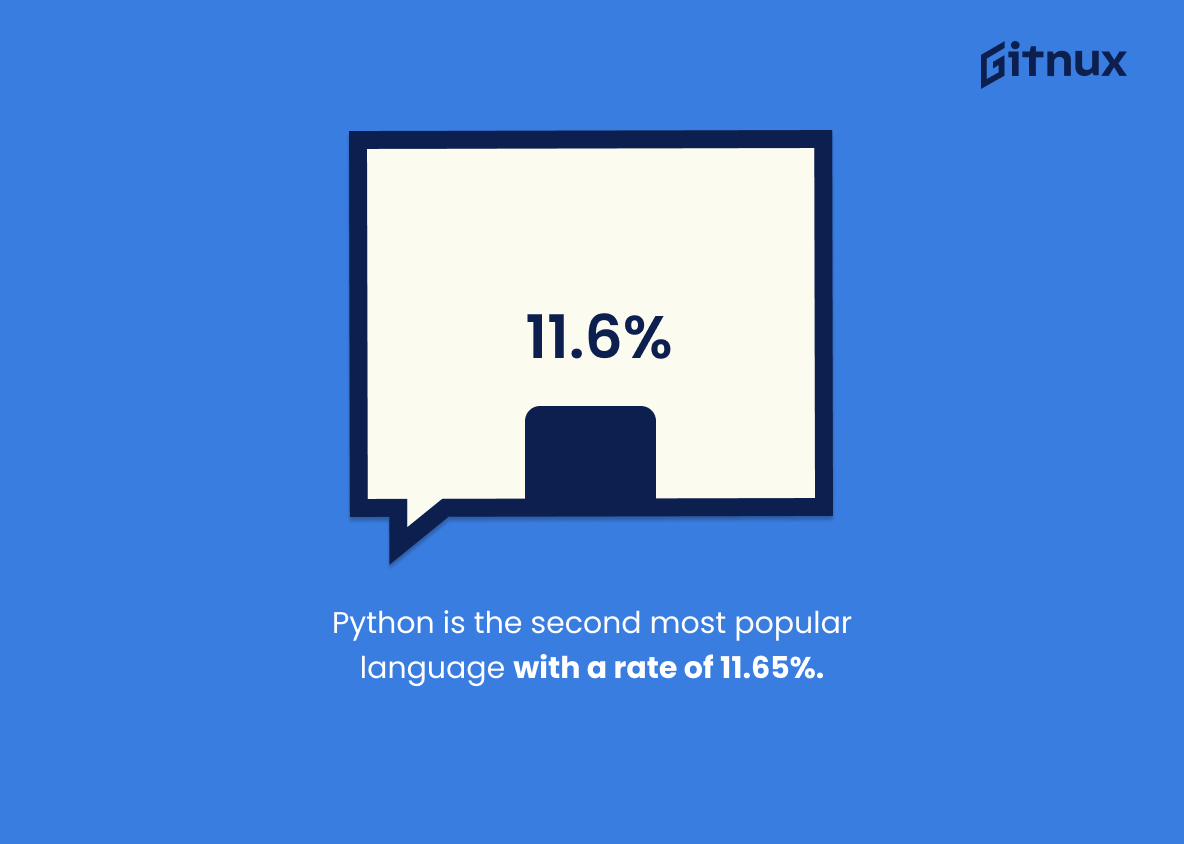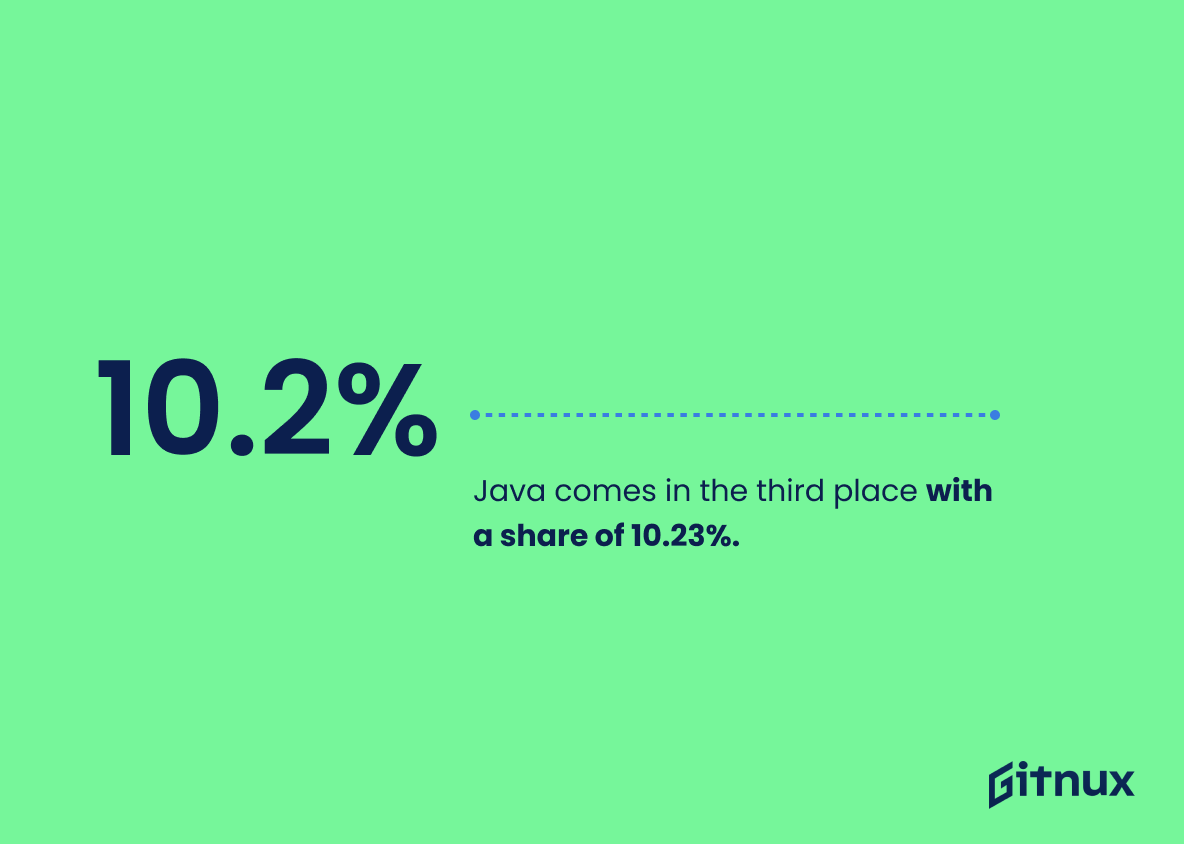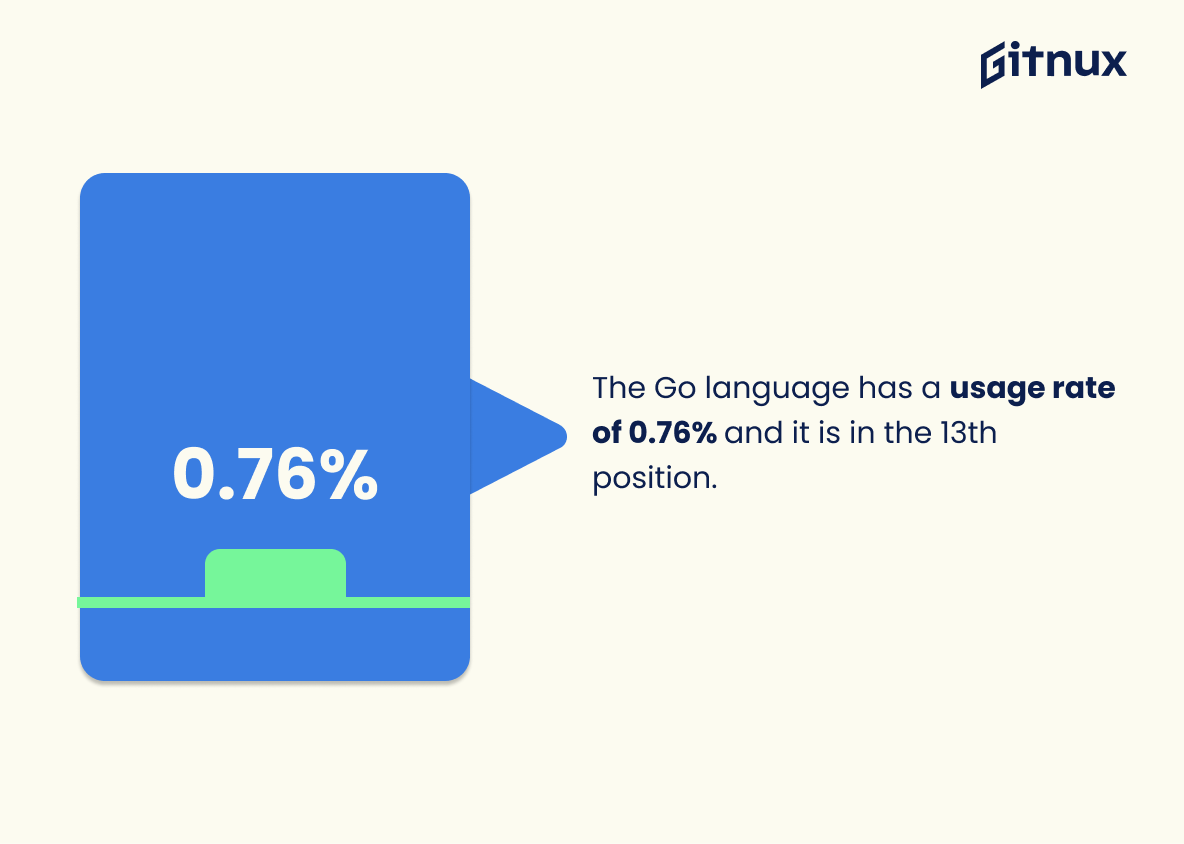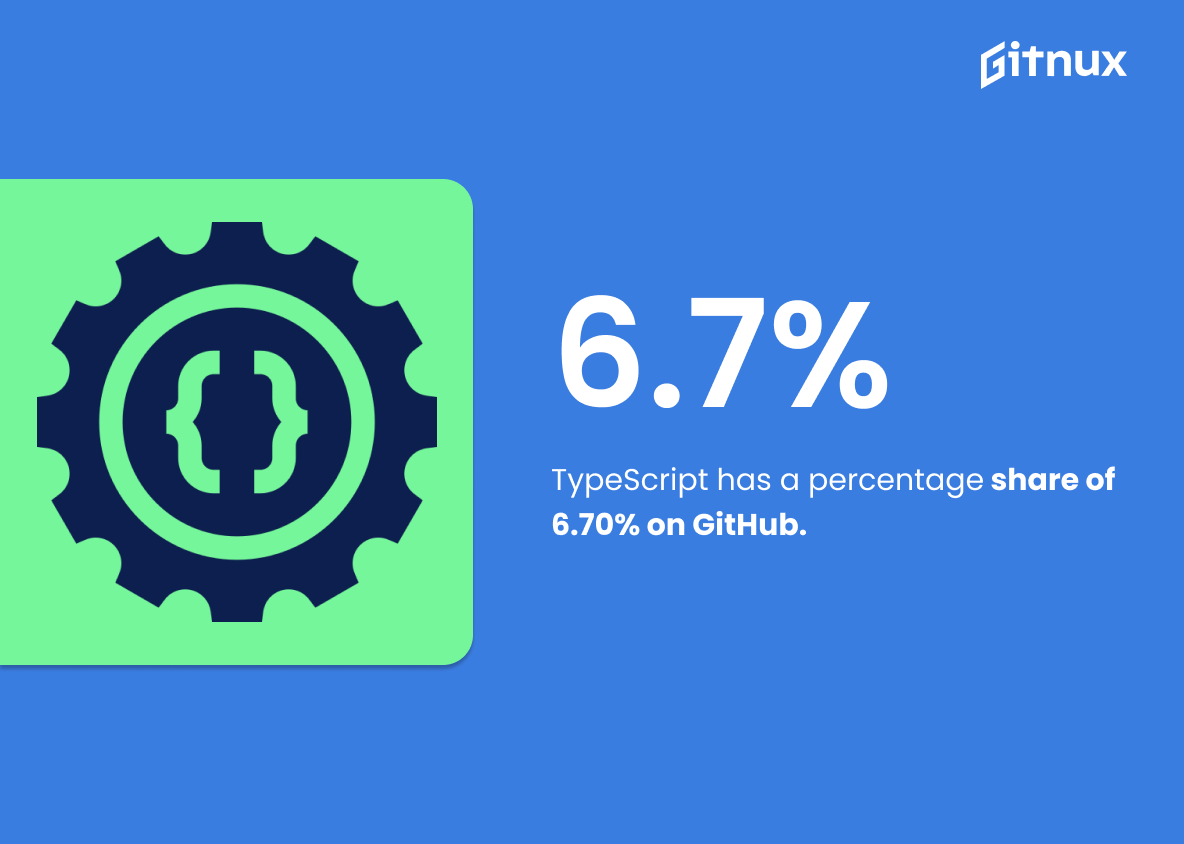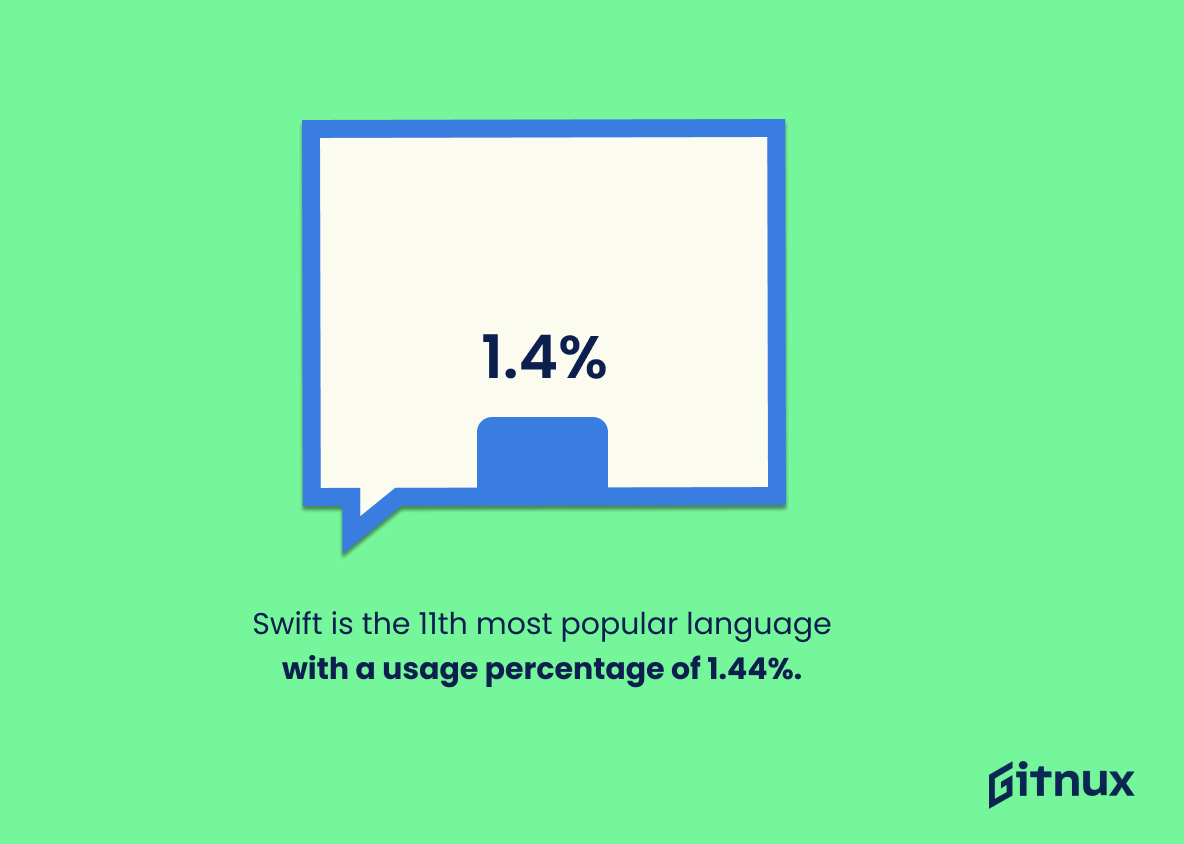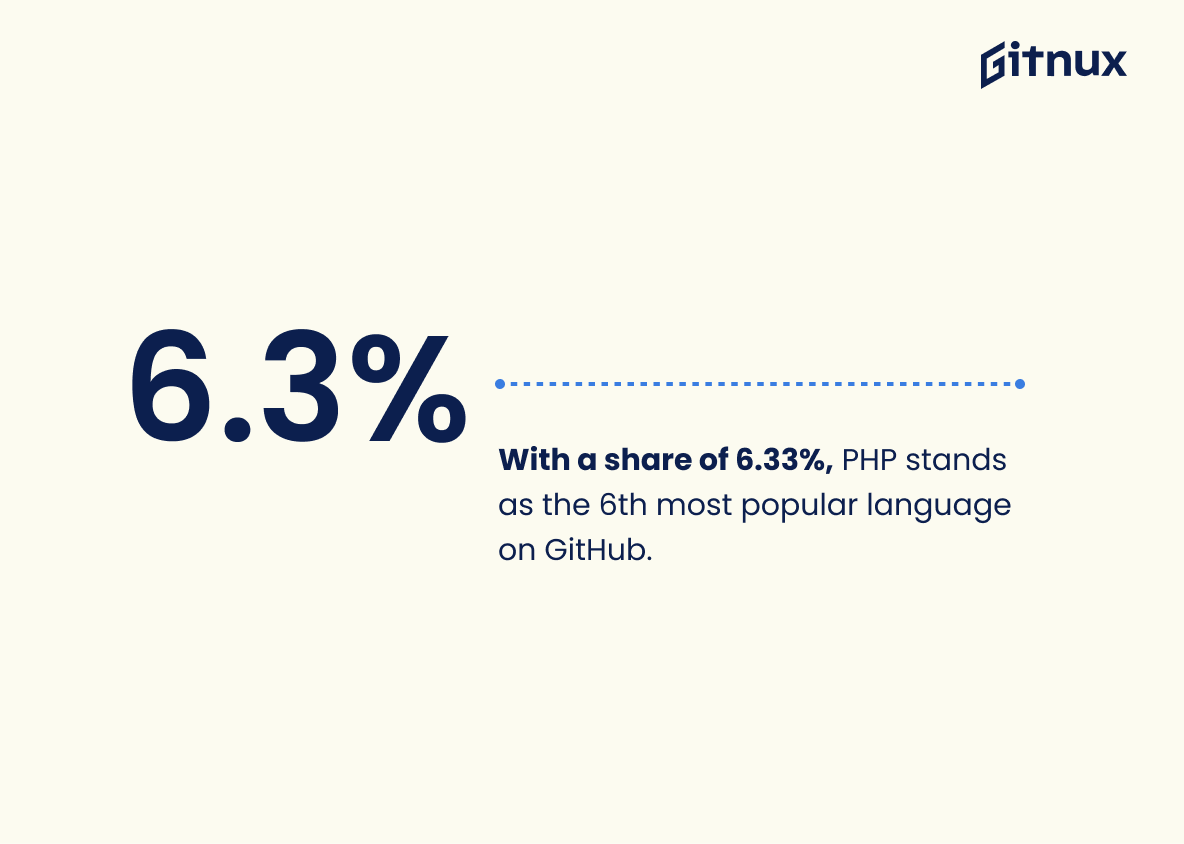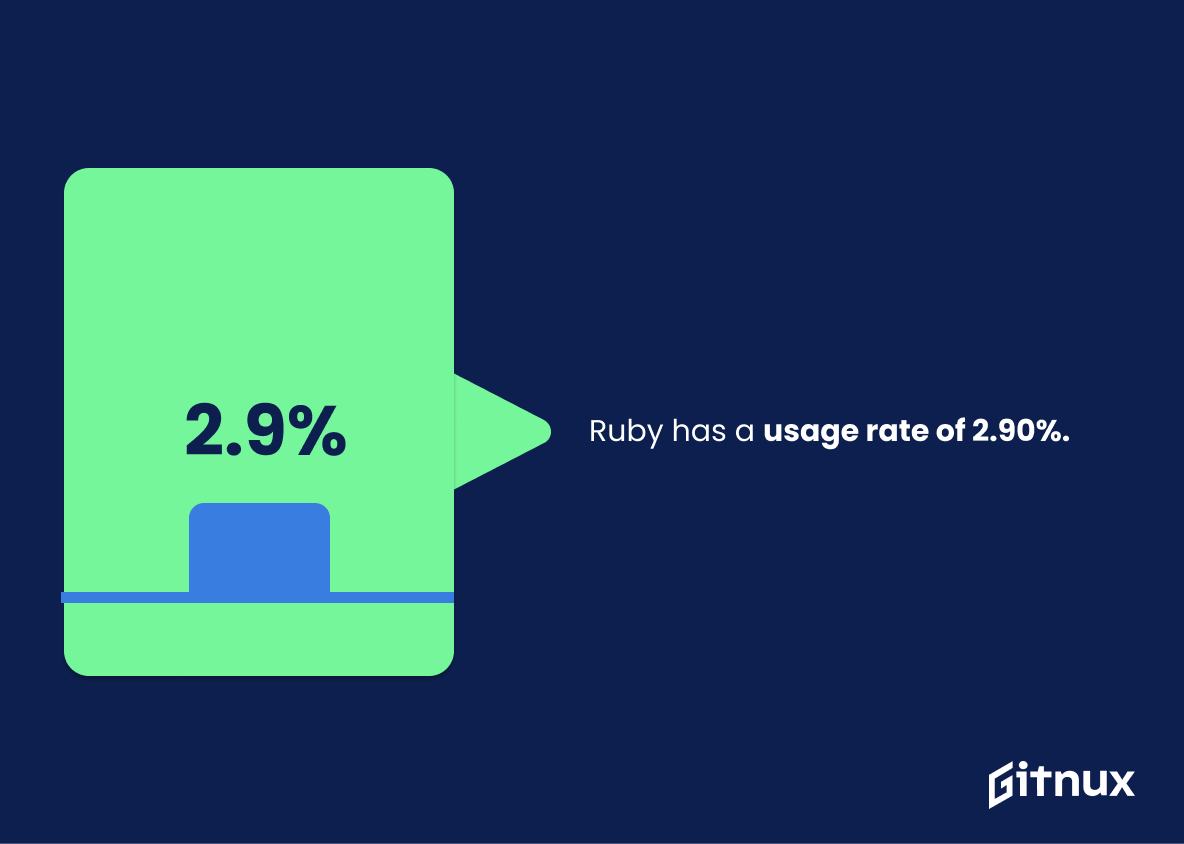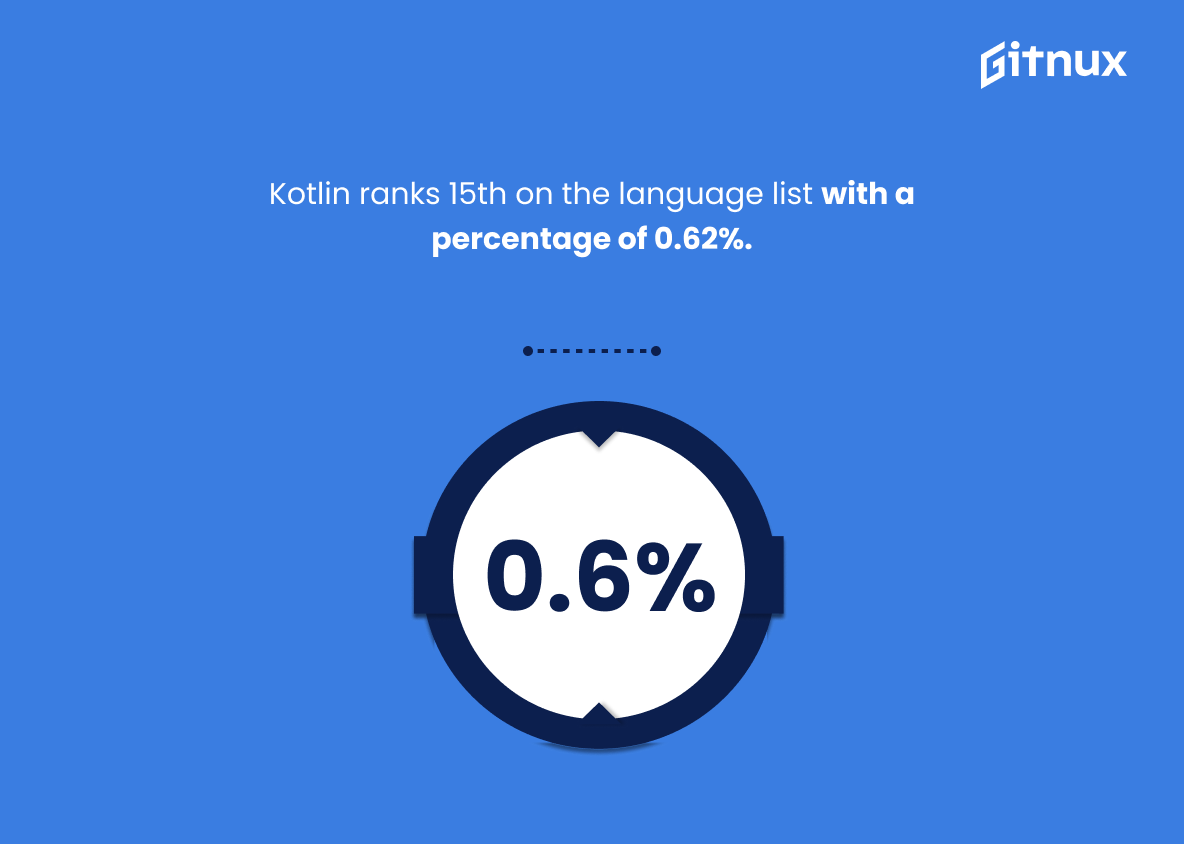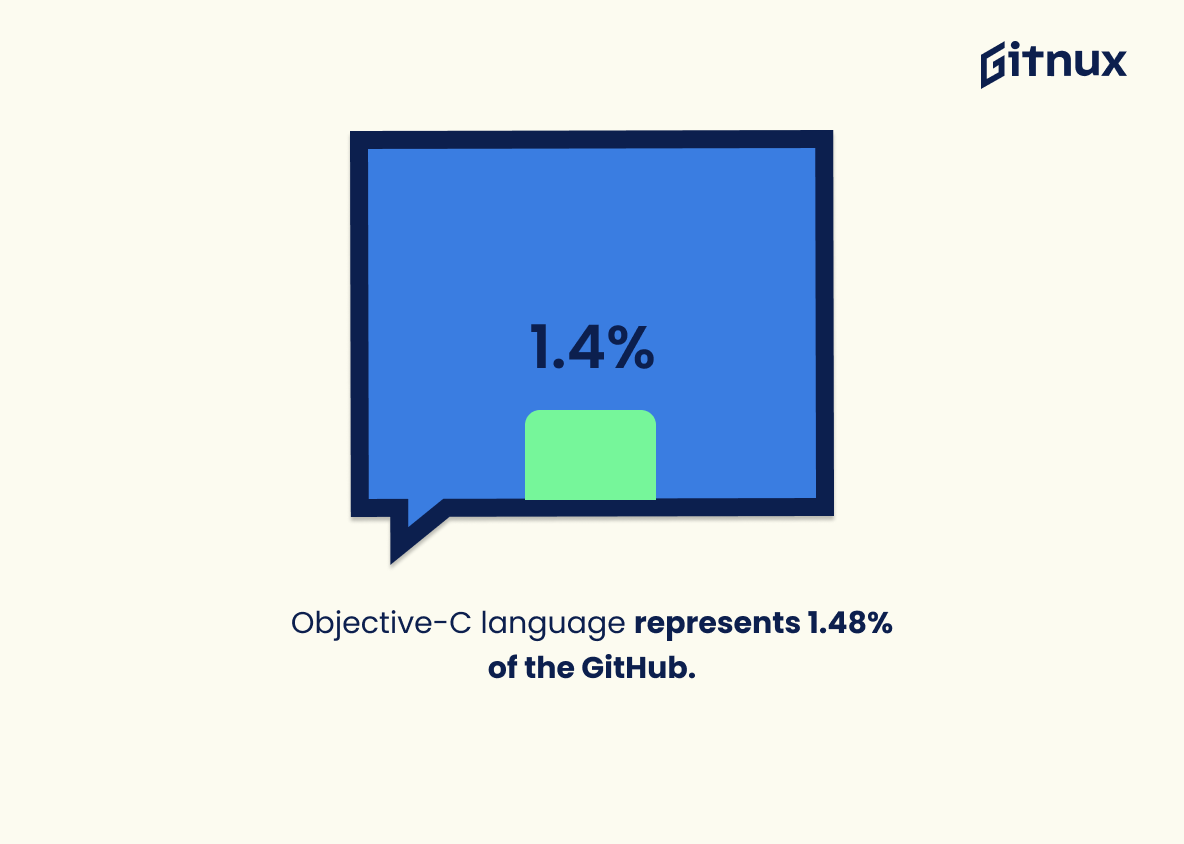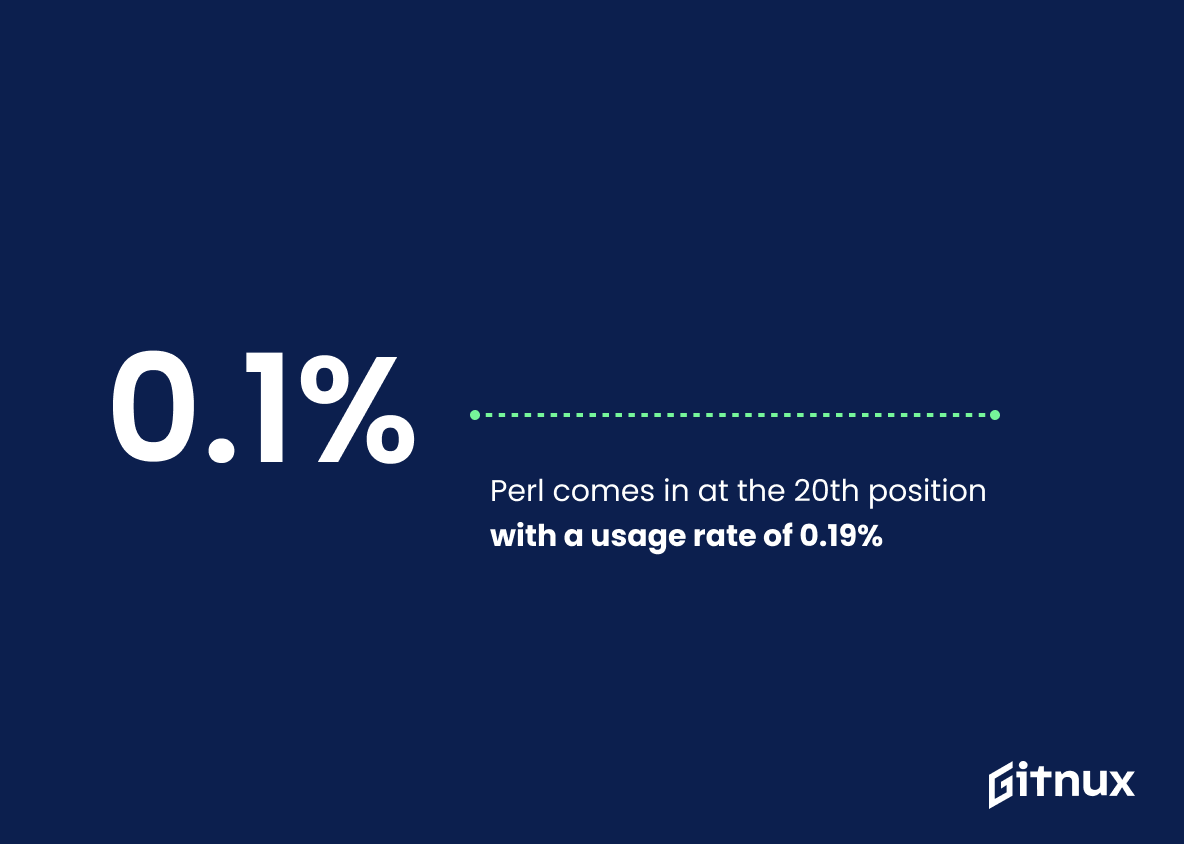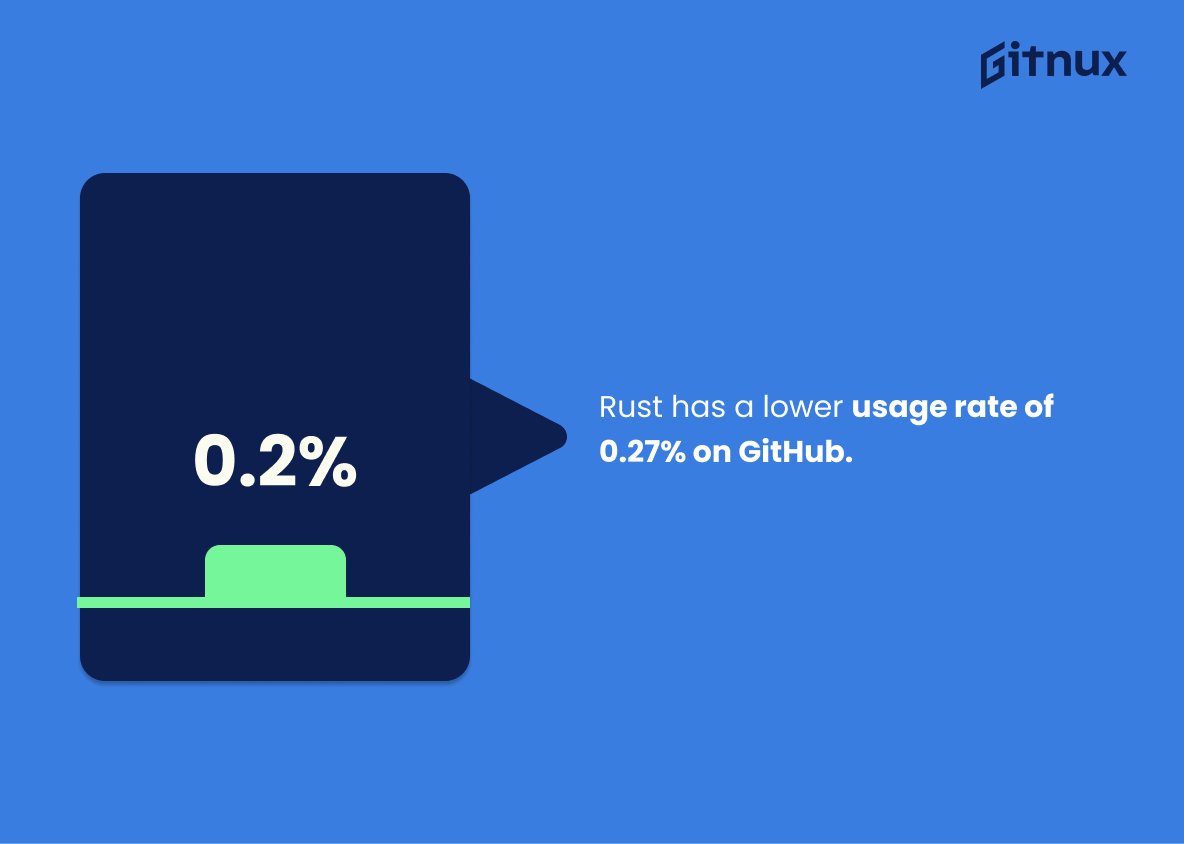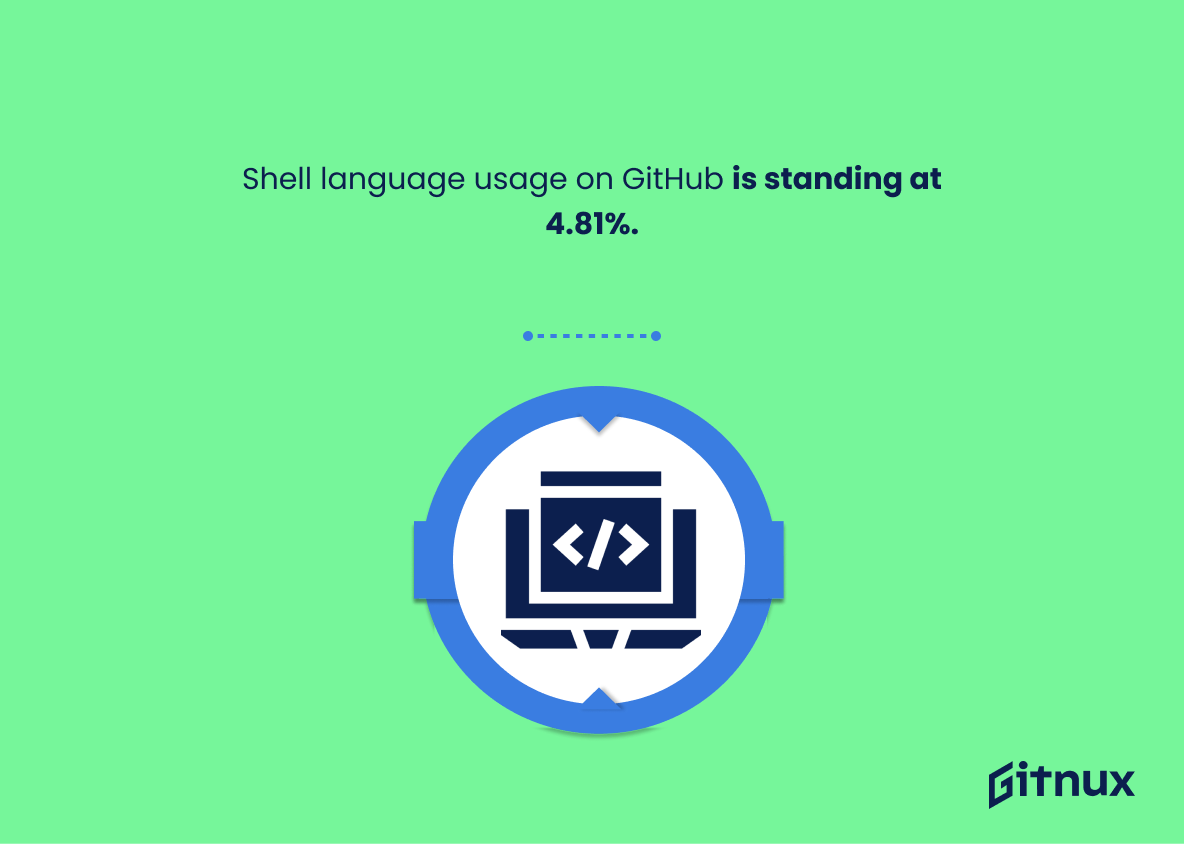In the rapidly evolving tech realm, one thing remains consistently valuable: data. Understanding the landscape of programming languages can be a defining factor in steering your career or project in the right direction. Few places offer such a wealth of information as GitHub, the world’s largest host of source code. In this blog post, we will delve into the fascinating world of GitHub language statistics. From the rise and fall of programming languages, to pinning down what makes a language popular, we aim to provide insights that could shape your coding journey. Whether you’re a seasoned coding veteran or a newcomer dipping your toes into the vast coding pool, these GitHub statistics are set to reveal intriguing trends and essential knowledge about the state of programming languages today.
The Latest Github Languages Statistics Unveiled
JavaScript is the most popular language on GitHub with a 13.83% usage rate.
Unraveling the threads of GitHub’s linguistic tapestry, one finds JavaScript shining as the prevalent thread with a commanding 13.83% usage. Its reign in the coding kingdom of GitHub not only demonstrates its unyielding popularity but also dictates a significant influence in the open-source world. As language choice often influences tools, libraries, and collaborative opportunities in code development, citing JavaScript as kingpin is paramount. In other words, any developer, entrepreneur or tech enthusiast immersing themselves in GitHub’s coding symphony, need to pay heed to the JavaScript’s symphonic dominance.
Python is the second most popular language with a rate of 11.65%.
Dipping into the dramatic surge of Python, positioned as the second most favored language with an impressive 11.65% usage rate, is a robust testimony to its prominence. It’s a bustling powerhouse that is playing larger than life role running countless lines of code on Github. In the arena of Github languages statistics, this illuminates the extensive reliance and trust developers place in Python, prompting many to follow the trail. This rising star not only validates its growing acceptance and appealing features but also presents itself as a worthwhile contender worthy of consideration for bloggers, developers and companies looking to stay relevant and competent in the technology realm.
Java comes in the third place with a share of 10.23%.
Highlighting the fact that Java holds the third position with a 10.23% share in the GitHub Language Statistics blog post, paints a clear picture of its significant presence. Despite being one of the older programming languages, Java’s robust, versatile nature keeps it relevant and in demand. This number reinforces its ongoing influence and demonstrates its resilience amidst a plethora of emerging languages. This not only underscores the steady popularity of Java among developers, but also illustrates its enduring practical applicability in various types of projects within the platform.
The Go language has a usage rate of 0.76% and it is in the 13th position.
Delving into the fascinating realm of Github Language Statistics, one figure leaps off the page like an acrobat in full flight – Go language, with an intriguing usage rate of 0.76%, nestles comfortably in the 13th position. This data point is no trivial speck on the vast statistical landscape; it’s a revealer of trends and intricacies of the programming world.
It acts as an insightful telescope, peering deep into the nature of the industry, pointing out the nuanced shift towards newer, more efficient languages like Go, despite its current lower usage rate. The 13th place might initially seem like a humble abode; yet it signals the quiet strength, the slow but sure-footed ascent of a language that is carrying the beacon of programming into uncharted territories.
Such fine statistical threads woven into our analysis disclose not just the present state but also a gentle forecast of the future. Thus, Go’s usage rate manifests itself as a pivotal cog within the larger machine of Github Languages Statistics, driving the narrative forward.
The percentage of C# language usage is 4.62% on GitHub.
Diving deep into the figures, you’ll discover that C# commands a 4.62% usage on GitHub. This striking fact isn’t just mere numbers. It paints a picture of the language efficiency, revealing the enclave of developers who have found a reliable mate in C#. It denotes the strength of a community whose voice, though seemingly small, has a significant impact in the software world. Remember, it’s not just about the majority, but every language’s contribution, including C# with its 4.62%, that brings about the rich diversity that GitHub upholds today in the realm of programming languages.
TypeScript has a percentage share of 6.70% on GitHub.
Unraveling the fabric of Github Languages Statistics, we notice an intriguing pattern – TypeScript securing a segment of 6.7%. This is not just a number but a reflection of TypeScript’s growing influence within the developer community on GitHub. The figure underpins TypeScript’s emerging image as a favored tool among developers, demonstrating its reach and importance in this vast landscape of programming languages. It serves as a compass for new developers, guiding them about trending language preferences, and also as a mirror for experienced ones to reassess their skillset portfolio. Hence, this percentage share of TypeScript is a key pillar upholding the grand panorama of GitHub Language Statistics.
Swift is the 11th most popular language with a usage percentage of 1.44%.
Drawing upon the spotlight of Github Languages Statistics, we uncover a compelling nugget — Swift nestles itself comfortably on the 11th rung. Commanding a modest, yet significant, usage percentage of 1.44%, it presents an intriguing canvas of assessment, especially for those dipping their toes in the ocean of coding languages. As we delve deeper, the importance lies not merely in its ranking but also in its potential impact and reach, with Swift resonating with a growing subset of developers. Thus, with every uptick in Swift’s percentage, there emerges a subtler story of shifts in programming inclinations, serving as a vital compass for aspiring coders, seasoned developers, or anyone keeping a brisk track of the dynamic coding landscape.
With a share of 6.33%, PHP stands as the 6th most popular language on GitHub.
This intriguing 6.33% share reflects PHP’s significant presence as GitHub’s 6th most popular programming language. It serves to underscore PHP’s resilience and continued relevance within the modern coding landscape. More interestingly, this number paves the way for a rich tapestry of conversations about the language’s attributes that command such affinity among a vast number of GitHub users. It goes beyond mere percentages to paint a picture of a still thriving and evolving PHP community despite the emergence of newer languages. It’s an acknowledgment of the ongoing trust and reliance that developers all around the globe place in PHP – a testament to its robustness and versatility. This statistic is the starting point for a deep dive into why PHP continues to hold its ground as a preferred language on GitHub, opening the way for comparisons with other languages, trends analysis, and exploring the secret of its lasting popularity.
Ruby has a usage rate of 2.90%.
The observation that Ruby possesses a 2.90% usage rate casts light on its foothold in the vast universe of GitHub languages. Given the platform’s weight in the global coding community, a near 3% slice of this cosmos is a testament to Ruby’s resilience, popularity, and utility in the field. This metric artistically paints Ruby as a dependable character in the storytelling of code language distribution, anchoring it among the notable languages in the GitHub narrative.
Kotlin ranks 15th on the language list with a percentage of 0.62%.
Diving into the world of Github Languages Statistics, the positioning of Kotlin as the 15th language, wielding 0.62% influence, holds deep-seated implications. Recognize this as a vibrant beacon of Kotlin’s mounting prominence among the legion of languages. The figure bestows a quantifiable testament to its increasing adoption and its impact that is beginning to shape the realms of coding. Equally crucial, this rank offers developers, organizations, and tech enthusiasts a fascinating glimpse into trending linguistic preferences, marking Kotlin as a language one might want to watch or invest efforts on sharpening. If this trend continues, Kotlin’s influence could potentially be a force to reckon with in the future of coding languages. Thus, its ranking in Github Language Statistics depicts an unfolding narrative of language trends in the world of technology.
The percentage share of Scala on GitHub is 0.35%.
Peeling back the layers of GitHub’s language utilization, a fascinating revelation is the 0.35% representation of Scala. As a part of GitHub Languages Statistics discussion, this subtle yet profound figure speaks volumes about the language’s presence in the vast sea of repository codes. Notably, Scala’s unique application in certain sophisticated programming realms, like concurrent and synchronized processing, justifies its niche yet significant role in the GitHub code cosmos. While its percentage might seem unimpressive on the surface, it underscores Scala’s dedicated user base and how it quietly churns the wheels of advanced software processes under the radar. To understand GitHub’s code tapestry, appreciating the Scala threads, no matter how slim their share, is integral.
Objective-C language represents 1.48% of the GitHub.
Delving into the multifaceted world of GitHub languages, we reveal a fascinating snapshot of the platform’s linguistic diversity. Standing at 1.48%, Objective-C marks its subtle but definite presence. This footprint serves as a testament to the untiring flow of ideas and innovations among developers still employing this robust language. Within a blog post on GitHub Languages Statistics, this figure accentuates the broader understanding of language utilization on the platform, shedding light on the continued relevance of Objective-C in the dynamic realm of coding languages.
Perl comes in at the 20th position with a usage rate of 0.19%
Understanding the position of Perl at the 20th spot with a usage rate of 0.19%, unveils interesting aspects of language preferences among GitHub users. It gives us a glimpse into the intricate web of programming languages, as they jostle for usage dominance. Describing the landscape of programming isn’t complete without such fascinating insights. It introduces us to the territory occupied by an established language like Perl that thrives on the periphery in a GitHub universe dominated by newer or more widespread languages. Note that Perl, though not widely celebrated, still has influence and is vital to the ecosystem, tracing the rich tapestry of variety that makes Github a unique platform for developers worldwide. Evidently, even languages, which appear as statistical underdogs, contribute significantly to color the Github spectrum.
Rust has a lower usage rate of 0.27% on GitHub.
Delving into the domain of GitHub Languages Statistics, the seemingly minute detail of Rust having only a 0.27% usage rate on GitHub serves as a noteworthy insight. It renders a vivid image of the programming ecosystem, highlighting Rust’s muted presence amidst the more commonly used languages. Despite its praised efficiency and memory safety features, this slender percentage, in essence, designates Rust as a hidden gem, used by a select few. In the grand scheme, it contributes to a nuanced understanding of coding preferences, potentially igniting discussions around why it’s underused and paving the way to explore its untapped potential.
Shell language usage on GitHub is standing at 4.81%.
Drilling down into the depths of language usage on GitHub, a fascinating nugget of data emerges –Shell commands a 4.81% market share. This seemingly meager percentage belies its intrinsic significance, notably in coding automation and customization tasks. Juxtaposed with other dominant languages, Shell’s prevalence illuminates its unique niche and continued relevance in the developer’s toolkit. This slice of the data pie positions Shell as the silent coder’s workhorse, integral in the grand pageantry of GitHub Languages Statistics.
Conclusion
Delving into Github Languages Statistics offers insightful perspectives on the current landscape of programming languages. It’s fascinating to see how the popularity of certain languages fluctuates over time, driven by advances in technology and shifts in the industry demands. However, each language has its own unique strengths and is chosen for specific projects based on its suitability. While statistics present an informative overview, choosing the right language for a task rests on understanding your project’s requirements. Keep an eye on GitHub language trends, but ensure your choices reflect the functionality and efficiency your project needs, rather than simply following popularity.
References
0. – https://www.madnight.github.io
